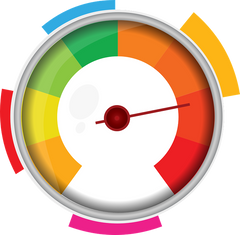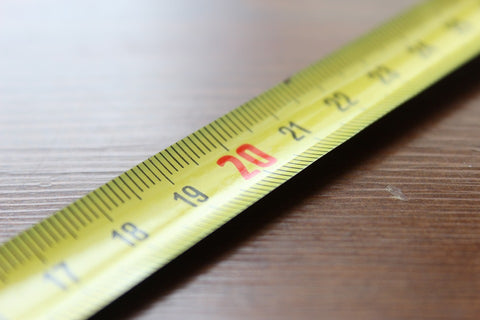CFM Measurement in Air Purifiers
CFM Measures Air Purification Efficiency
An important measurement provided by manufacturers is the CFM value for their units. CFM stands for cubic feet per minute, and this number provides insight into the efficiency of the air purifier, namely how many cubic feet per minute this air purifier can scrub.
An air purifier is all about the air filters, right? Not exactly.
Filters play a very important role, of course - without the right filters, indoor air contaminants are free to roam.
Design and construction are just as important. If the air cleaner is not well built, then the air is not going through the air filters properly and contaminants are free to roam once again.
What to look for
The number describes the amount of air that is passing through the system at a certain point. It is usually measured as the air exits the unit. The higher the CFM count, the larger the space the air purifier can clean.
In order to figure out how high the number for your air purifier should be, you need to know the size of your indoor space. A rule of thumb is that you need about 100 CFM for each 250 square feet of space. If you are looking for a small air purifier for your desk, for example, you will need about 100 CFM. A room air purifier typically has about 400 CFM. The right CFM value is important so that there is proper airflow in the room and ideal turnover of air.
How to Calculate the Required CFM
CFM = Length x Width x Height x (Air Changes per Hour) / 60 min.
Calculating the CFM is measuring the air volume velocity and it is a relatively simple calculation.
You need to know the length, width and height (measured in feet) of the given space as well as how many air changes per hour are required. Air changes per hour depend on how you use the space and the level of your indoor air quality.
Most rooms, including living space and office space, need 6 air changes per hour because the indoor air pollution tends to be on the light side. Naturally, a large kitchen/dining area may require more air changes than a small bedroom or guest room.
Other areas, including conference rooms, break rooms, dining halls and similar spaces usually require eight air changes per hour, while more polluted spaces such as designated smoking areas, restrooms, bingo halls and casinos need approximately 12 air changes per hour.
Other uses
An air purifier’s CFM rate is a key measurement tool for the determination of a unit’s clean air delivery rate (CADR). CADR describes particles that can be removed from the air times the CFM air flow rate through the air purifier. It’s actually the CFM of air in a 1,008 ft3 room that has had all the particles of a certain size (dust, pollen or smoke) removed from the air. The rating has certain limitations, however, since it only measures particles and not volatile organic compounds (VOCs).
CFM is just one of many possible tools to measure an air purifier’s efficiency. It is always recommended to contact a manufacturer to discuss which features and filters may be needed in each unique setting.


